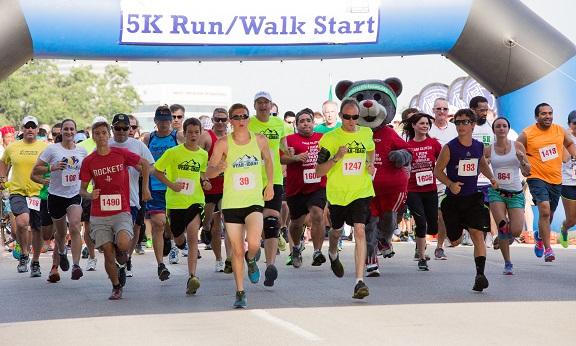
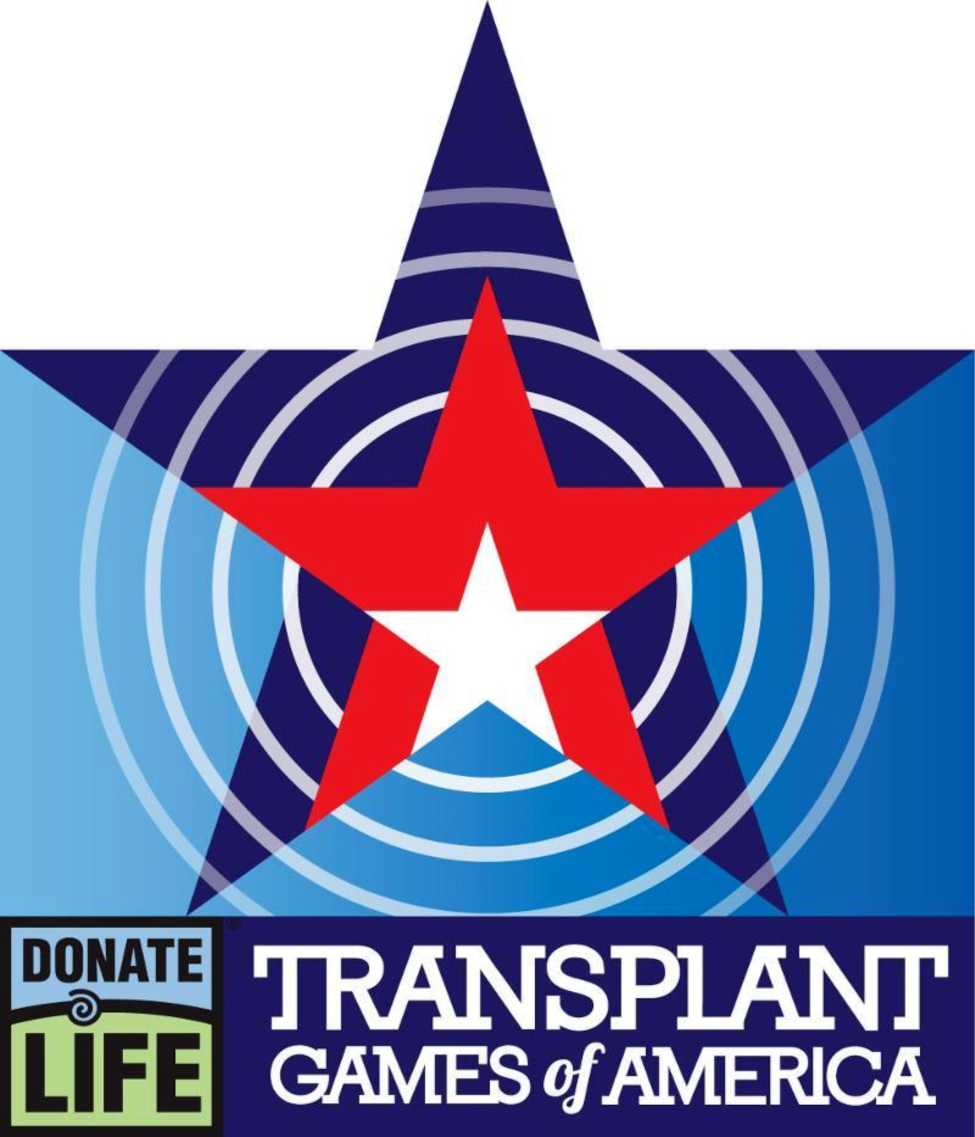
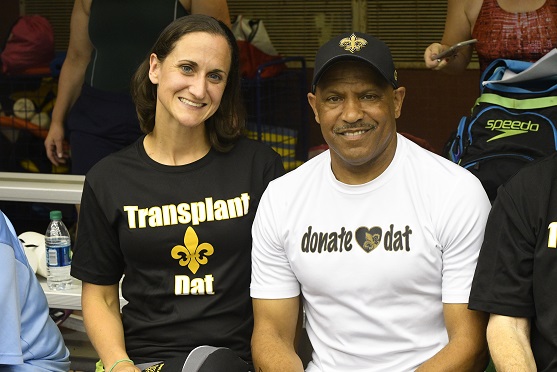
The Donate Life Transplant Games is a multi-sport festival event produced by the Transplant Games of America for individuals who have undergone life-saving transplant surgeries. Competition events are open to living donors and organ transplant recipients, as well as bone marrow, corneal and tissue transplant recipients. More than an athletic event, the Donate Life Transplant Games highlight the critical importance of organ, eye, and tissue donation, while celebrating the lives of organ donors and recipients. The six-day-long event, which takes place every two years, will next be held August 2-7, 2018, in Salt Lake City, Utah.
Editor's Note: Here is a link to enroll as an organ donor.
Sports Destination Management: The Donate Life Transplant Games provide a competitive forum, but more than that, they raise public awareness. What are the statistics like for organ donation?
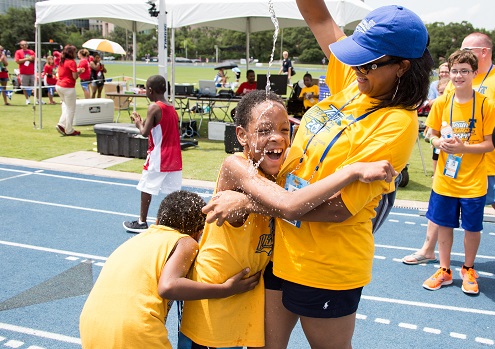 Bill Ryan: Donate Life America reports there are over 118,000 individuals currently awaiting a life-saving organ. Approximately 22 of those will die each day from waiting. Our goal is to get more people on the donor registry.
Bill Ryan: Donate Life America reports there are over 118,000 individuals currently awaiting a life-saving organ. Approximately 22 of those will die each day from waiting. Our goal is to get more people on the donor registry.
SDM: It’s a sobering statistic and it really highlights the importance of the mission of the Games. How long have the Games been around?
Ryan: The Games have been in existence since 1990. They were created by Sandoz, the predecessor company to Novartis Pharmaceuticals who remain presenting sponsors to the Transplant Games today. The U.S. Transplant Games became the Transplant Games of America upon conclusion of the 2010 Games in Madison Wisconsin when the Games were suspended by the National Kidney Foundation.
At that point, T. J. Maciak, a kidney recipient approached the West Michigan Sports Commission in Grand Rapids and asked if the Games could be kept going. We made the decision at the time to put on a small set of Games – we only had about 11 months to do the planning. It wound up being the second-largest Games ever produced. After that, we created a 501(c)3 and started organizing it.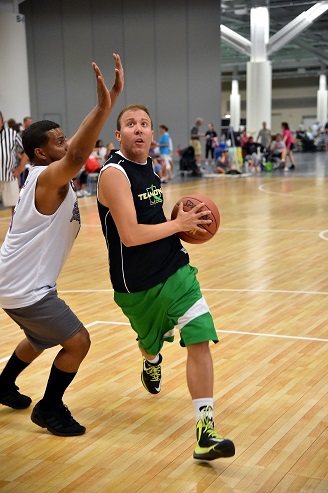
SDM: And the Games have been growing?
Ryan: They have grown dramatically. In Grand Rapids in 2012, we had 1,377 registrations. In 2014, we had 3,764. In 2016, we had 4995. I think the National Kidney Foundation did a great job of establishing a great event but we saw the opportunity to generate substantial growth and impact the lives of many more people. The first thing we did was add cornea and tissue transplant recipients and expand the number of sports and ancillary programs. By adding workshops and seminars, we broadened the appeal across a wider audience.
SDM: How many people attend all together?
Ryan: We estimated in Cleveland in 2016, we had 7,500 people.
SDM: What was the economic impact?
Ryan: In Houston, total economic impact was $8,301,713. I don’t have hard data for Cleveland, but based on the attendance increase and the fact that we added an additional day to the program, I am comfortable that we were in the $10 million range for economic impact.
SDM: The Games seem to keep evolving. What would you like to change?
Ryan: Our goal is to always get more professionals – more doctors, nurses, transplant program coordinators, social workers, 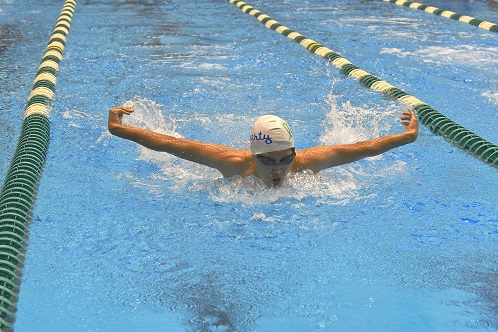 organ procurement professionals and others . We believe the Games are a great forum to increase education, support, and media attention to a great cause.
organ procurement professionals and others . We believe the Games are a great forum to increase education, support, and media attention to a great cause.
SDM: Could they compete as well?
Ryan: No, the only people who can compete are recipients and living donors but the Transplants Games have much to offer with all of non-competition programming.
SDM: How many sports do you offer?
Ryan: When we took over the Games, there were only 12 sports and we are now offering 20 competitions. We wanted to add some t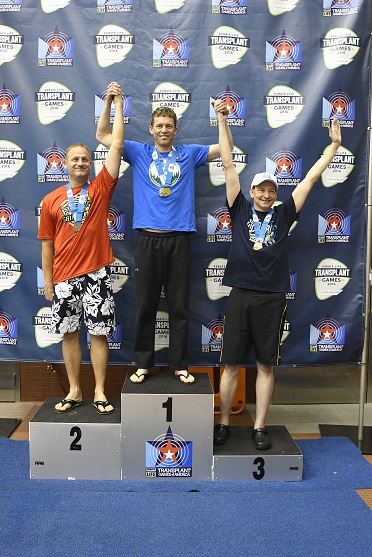 hings that people could do even if they weren’t really athletic, so we added poker, trivia and cornhole, ballroom dancing, and Lyrics for Life, a singing competition.
hings that people could do even if they weren’t really athletic, so we added poker, trivia and cornhole, ballroom dancing, and Lyrics for Life, a singing competition.
SDM: How do you make the decision to add – or even cancel – sports?
Ryan: We didn’t have a lot of people signed up for racquetball in 2014, and we were thinking of cancelling it, but then in 2016, we had people signing up for it. In terms of adding sports, it’s generally based on demand. We are adding pickleball in 2018, for example.
In addition, we do a post-event survey, and we ask for feedback on which sports to add or delete, and we typically get 600 to 800 responses. People suggest adding all kinds of things; recently, someone suggested adding equestrian sports – but we’d have to get horses and a paddock, and that’s just not possible. We do look at every suggestion, though.
SDM: Is it hard to find cities to host the Games?
Ryan: No, the event is a big draw. We have a half-dozen communities that have expressed interest in 2020 already. We also have a lot of interest in moving it around so that we can raise awareness. The process is similar to many other groups; cities submit bids and we do a fairly lengthy analysis, then do site visits to the top three.
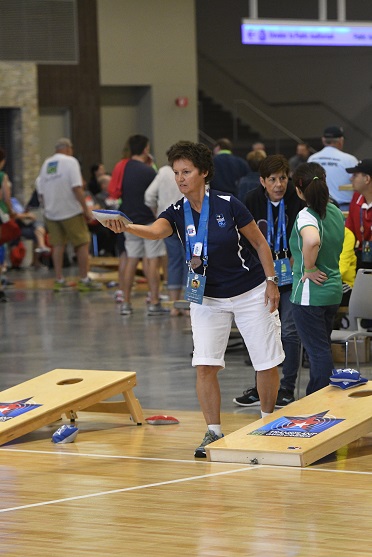 SDM: What has influenced your choice of cities?
SDM: What has influenced your choice of cities?
Ryan: We pick cities based on certain criteria. For example, when we went to Houston in 2014, we actually chose Texas because they were ranked near the bottom of all the states in terms of the percentage of adults on the donor registry. At 12 percent , they were well below the national average of 52 percent. With the help of the Transplant Games, in one two=year, period Texas increased the number of adults on the donor registry by 2.5 million people. The numbers continue to grow and Texas has taken on a leadership role in promoting organ, eye and tissue donation.
In 2016, we chose Cleveland to host because we wanted to focus on the great need for donors in the minority community; Cleveland was a great partner in that regard. Through the partnership with the Cleveland Clinic and the University Hospital network, we were able to reach into the minority community in Cleveland and were successful in raising awareness in this important segment of our population.
We’re really looking forward to 2018 in Salt Lake City; something we’ve learned is that it is a very giving and supportive community. We’re really excited by the respons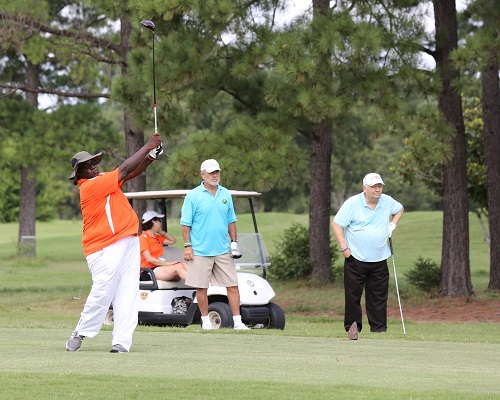 e we’re seeing so far.
e we’re seeing so far.
SDM: What initiatives are in place to get younger people, such as high school and college students, on the organ donor registry?
Ryan: It really varies by state. In Michigan, for example, it was a significant initiative that went through the Office of the Secretary of State in Michigan, who is responsible for drivers’ licenses and title work. Through the work of Secretary of State Ruth Johnson, all Secretary of State offices throughout Michigan are now required to ask people who are applying for, or renewing, their driver’s license if they want to be an organ donor. What started as a commitment by one dedicated Secretary of State, became law recently and the numbers in Michigan continue to grow. Most states have similar programs, and support for organ, eye and tissue donation is a great topic for high school and college students.
SDM: Getting back to the Games themselves, you also offer ancillary events.
Ryan: Yes, there are a ton of other things that people find appealing, even if they aren’t competing. There are our spectacular opening and closing ceremonies; and a very special event called the Donor Tribute, an almost-spiritual ceremony to honor the memory of loved ones lost who gave the gift of life. We also have our Quilt Program, and the Quilt-Pinning ceremony. People are invited to create a quilt square in honor of a loved one, and the ceremony includes saying a few words abou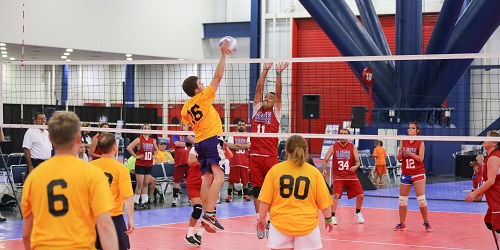 t their loved one and then pinning the quilt square onto a blank quilt which is later sewed together and brought to future Games.
t their loved one and then pinning the quilt square onto a blank quilt which is later sewed together and brought to future Games.
We also have workshops; in 2014, we had 29 workshops and seminars. We’ll probably reduce that number down to about 20 for the future. Many deal with topics that are very specific to organ donation and organ transplant; they include dealing with grief, being a teen with a transplant, how to write a thank-you note to a donor family, health and fitness after organ transplant surgery and the importance of monitoring your medications.
SDM: A lot of information you can’t get anywhere else, in other words.
Ryan: Most people who come say they will never miss another set of Games. This industry is relatively new and with all young industries, it does not have cohesive group that represents everyone – you’re kind of out there on your own, and it’s hard to find people who have related issues and common goals. We’ve become the advocacy group for the organ donation and transplant community. We intend to be the “Voice of the Trans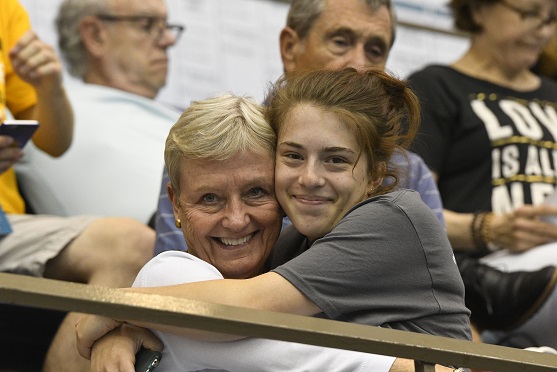 plant Community.”
plant Community.”
SDM: It sounds like things can get very emotional.
Ryan: Yes, you’ll see things like a person who has received a transplant meeting the family of the donor for the first time – it happens throughout the event, and they’re hugging even though they just met. The donor families can actually sign up to hang the medals on the winning recipients and there are always a lot of people who want to do that.
SDM: What would you 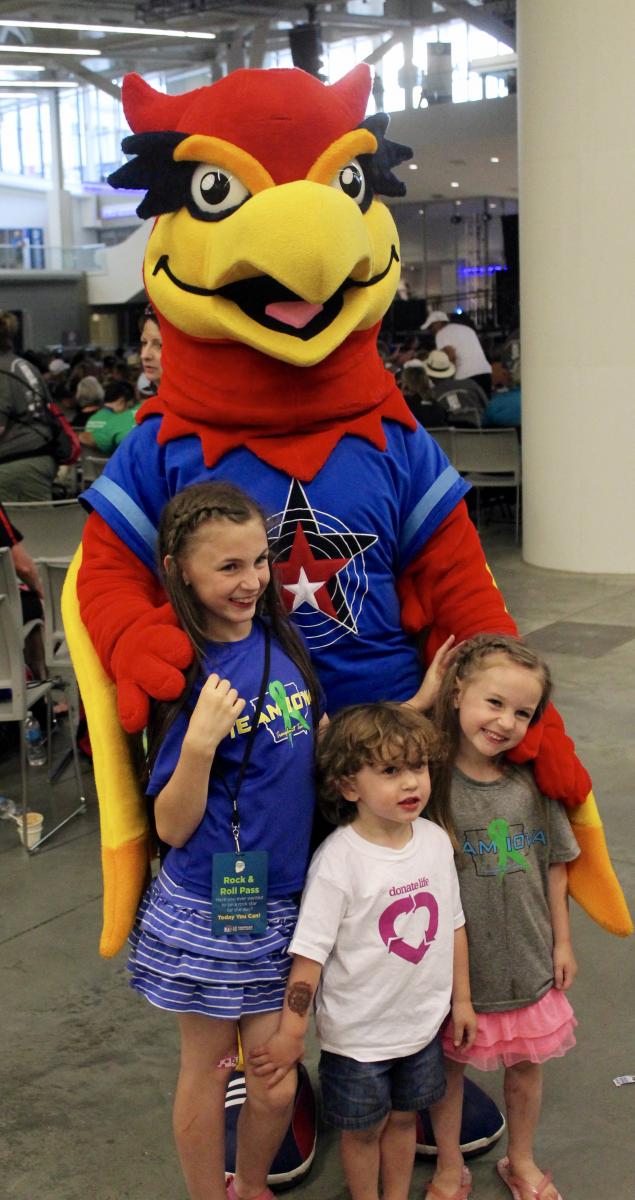 say is the main challenge of the Games?
say is the main challenge of the Games?
Ryan: Like any other non-profit organization, we’re underfunded and understaffed. Our goal is to focus awareness on the need for more donors and to begin the process of serving our stakeholders. We are always looking for sponsors; ideally, we’d like to build up a $ to $6 million fund so that we can grow the games the right way and hire more staff.
We recently made the decision to publish a magazine, TransplantNATION, that will come out six times a year. We’re slowly getting that together.
SDM: Will it be a medical journal about organ transplant and donation?
Ryan: No, it’s written for people who are organ recipients, living donors and donor families. I call it People Magazine for the transplant community and my staff always makes the most terrible face when I say that, but it’s meant to be a general interest publication for all involved.

